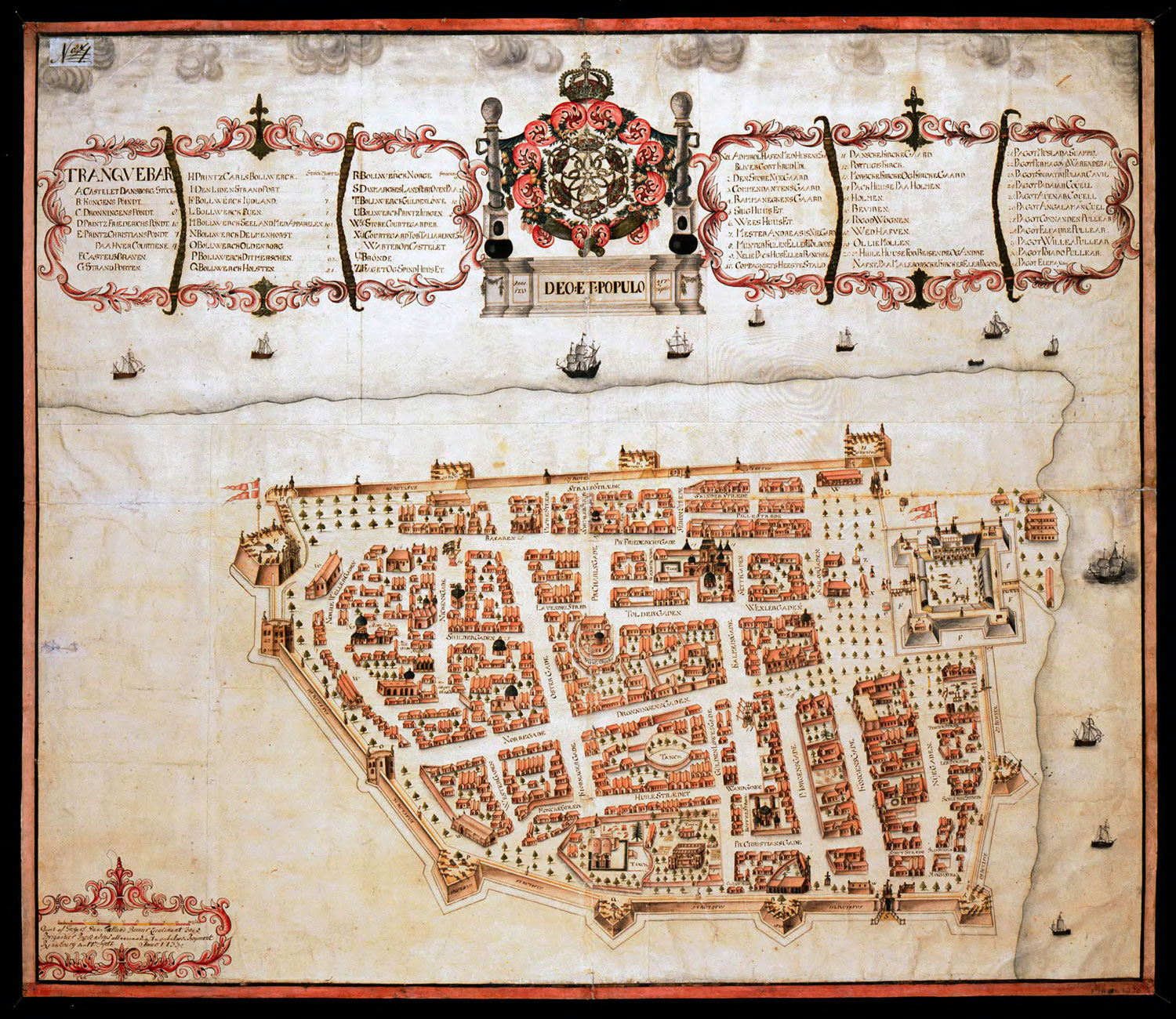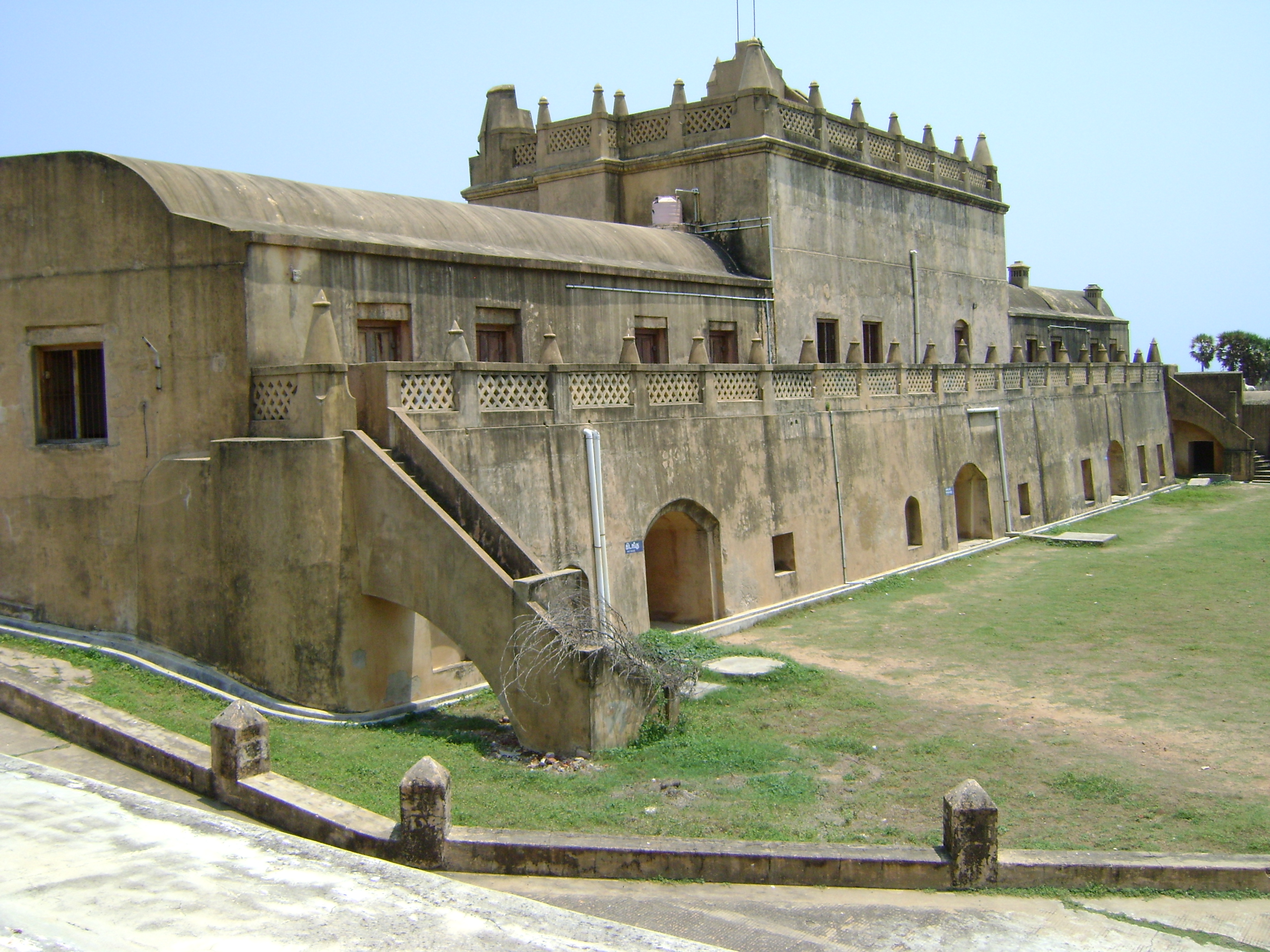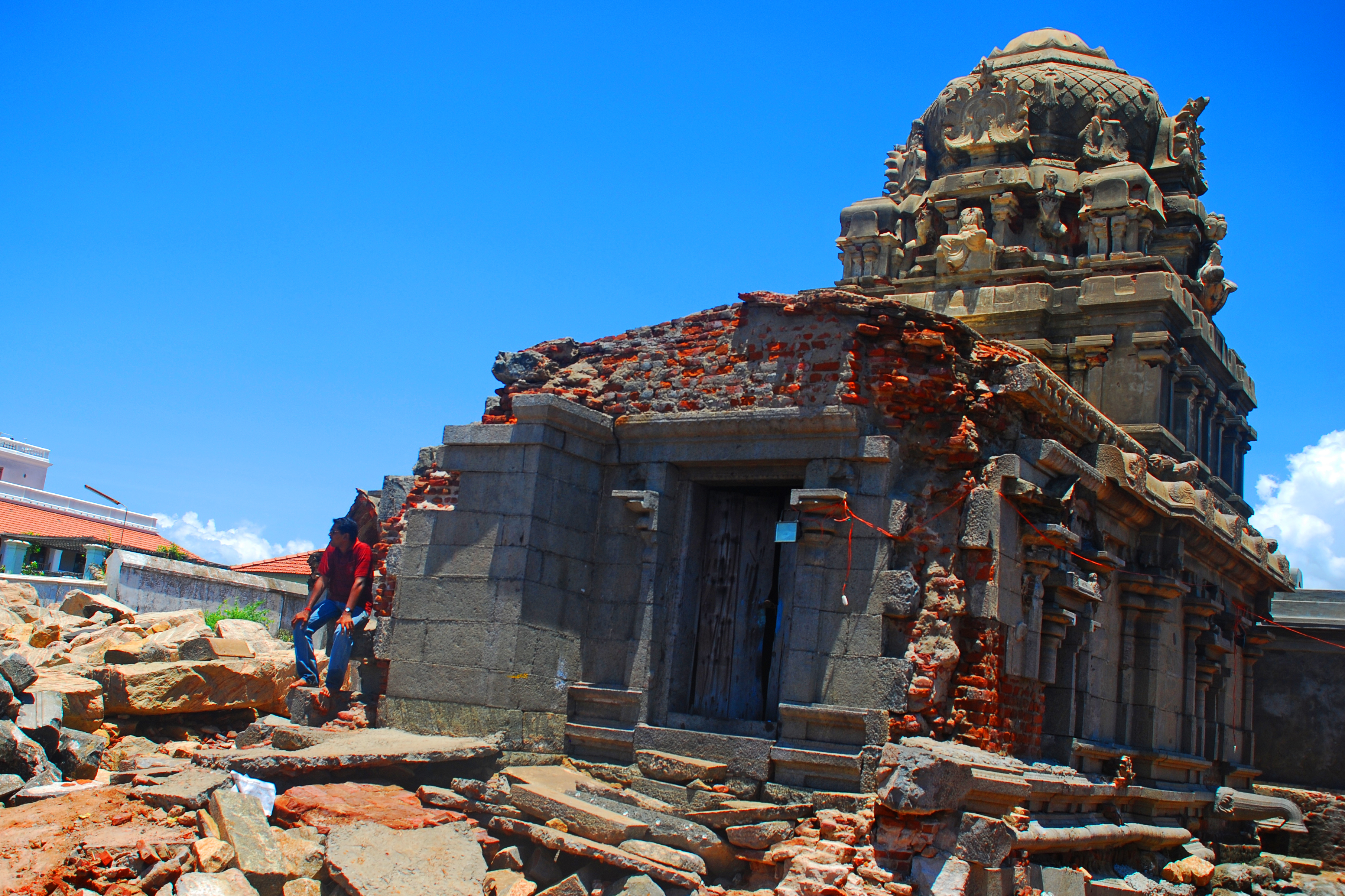Fort Dansborg: The Danish Bastion in Tamil Nadu
Tucked away in the little seaside town of Tharangambadi is the second largest Danish fort in the world – Fort Dansborg. Located in the Mayiladuthurai district of Tamil Nadu, this fort has a fascinating history featuring Thanjavur Nayaks, Dutch seafarers, Danish colonisers and German missionaries. Apart from its history, the fort is remarkable for its unique architecture that blends a variety of styles.

Fort Dansborg. Source: Wikimedia Commons
HISTORY
The word “tharangambadi” means the land of the singing waves. With the river Poraiyur on one side and the Bay of Bengal on the other, Tharangambadi became an important trading port for both inland and overseas trade. Ancient Sangam texts like Purananuru (compiled between 1st century BCE and 5th century CE) describe trading activities in the close vicinity. A 14th century inscription explicitly mentions this town which attracted traders from all over the world.
It was in the early years of the 17th century that the Danes first arrived in India. King Christian IV, the monarch of Denmark and Norway at the time, set up the Danish East India Company in 1616 CE. Inspired by the tremendous wealth of the Dutch that was extracted through the lucrative spice trade with Asia, the Danish king too had become eager to send an expedition to this region.
Accordingly, five ships under the command of Admiral Ove Gjedde set sail for Asia. Upon arrival, the Danes were soundly defeated by the Portuguese in nearby Sri Lanka (then Ceylon). A small part of the crew managed to escape with the help of a local fisherman and somehow reached the Coromandel Coast of India. Here, a treaty was negotiated with Raja Raghunatha Nayak, the ruler of Thanjavur.
Thus, on 19 November 1620, the Danes were given possession of the town of Tharangambadi, which they called Tranquebar, and granted permission to trade within the Kingdom of Thanjavur. Signed on a manuscript adorned with gold-leaf, this treaty can still be found in the Danish National Archives in Copenhagen. Fort Dansborg was built in the very same year.

Plan of Tranquebar, 1733. Source: Wikimedia Commons
The Danes controlled the fort until 1845, at which point they sold it to the British. The port of Tranquebar stopped being an active trading post under the British and the fort lost some of its significance. After Independence, the fort was used as an inspection bungalow by the Tamil Nadu government. At present, the fort houses a museum displaying items from the fort and other Danish artefacts.
ARCHITECTURE
The fort is built in the Danish architectural style that is broadly characterised by high ceilings, spacious rooms, columnated verandahs, and protruding pelmets or decorative frameworks placed above curtains. It is trapezoidal in shape, with the main door facing North and an additional entrance towards the East. The fort is surrounded on all sides by fairly large ramparts and four bastions mark each cardinal point. Adjoining the ramparts on three sides are compartments for a kitchen, prison, godown, and barracks.

Fort Dansborg. Source: Wikimedia Commons
On the fourth side stands a vaulted two-storied building. The lower level of this structure once housed a warehouse. The upper levels contained rooms for the Governor, the senior merchants of the Company and the priests, along with a church at the centre. This church has now been turned into a museum. Portraits of Raja Raghunatha Nayak and King Christian IV, a map of Tranquebar, and several works of Danish pottery are displayed here.
A unique architectural feature that was discovered in the central part of the fort are four domes resembling the shape of a camel’s hump. These rooftop domes are supported by a central pillar in the hall below. It is pertinent to note that the fort was once part of a larger citadel, with walls on all sides to protect the area from cavalry raids. These walls have since been eroded by the seaside climate but some of the structures within still remain. Notable amongst these is the Masilamaninathar Temple that predates the fort itself. Built in 1306 CE, this temple was constructed on land donated by the Pandyan king Maravarman Kulasekara Pandyan I. Though largely dilapidated now, this Shiva temple is remarkable for its curious mix of Tamil and Chinese architectural styles.

Masilamaninathar Temple. Source: Wikimedia Commons
The Zion Church, which is believed to be the first Protestant church in India, was also established in Dansborg in 1701. Stained glass windows, a historic bell tower, and spires tiled with brick can be observed at this Gothic-style church. However, the beautiful church was primarily intended for the Danish officials and employees and not the local populace.
King Frederick IV of Denmark soon made an appeal to form a new congregation for the natives. Two German missionaries called Bartholomäus Ziegenbalg and Heinrich Plütschau established the Tranquebar Mission in 1706 and built the Jerusalem Church in Dansborg within the next year. The sermons at this church were delivered in Tamil and Portuguese since the strong Portuguese presence in the neighbouring areas had made it the lingua franca. The first Tamil printing press in India was built inside the fort and used to print a Tamil translation of the New Testament of the Bible. Though this church was destroyed by a tsunami in 1715, the New Jerusalem Church built in 1718 survives to this day.

New Jerusalem Church. Source: Wikimedia Commons
Other colonial remnants include the Danish Governor's bungalow that was constructed in 1784, several tombstones from the 17th and 18th centuries, and the town gateway that was erected in 1792. The entire citadel is modelled after a European town, with wooden doors leading to the main thoroughfare called King’s Street. The Gate House, Rehling’s House, Port Master’s Bungalow and Muhldorff’s House can be seen here. The entire street displays a blend of Indian and European aesthetics.
The location of the fort near the sea has necessitated significant efforts towards its restoration. In 2001, the Archaeological Survey of India (ASI) restored certain artefacts found within the fort premises, including the portrait of Raja Ragunatha Nayak and the map of Tranquebar. In 2005, an ambitious collaborative project was successfully completed as the Danish Tranquebar Association, the State Archaeological Department in Tamil Nadu, and the Danish Royal family came together to restore parts of the fort. Following the 2004 Indian Ocean tsunami, the Tamil Nadu government also began to build stone embankments along the shore to protect the fort and the Masilamaninathar Temple against further erosion. As a result of these efforts, the fort has now become one of the prominent tourist landmarks in the area.
With its complex history and quaint architecture, Fort Dansborg provides a rare glimpse into the convoluted colonial rivalries that once existed in India. It also underlines the pre-eminent position of India in world trade over several centuries. Having been destroyed by tsunamis on multiple occasions, the fort highlights the role of environmental forces in determining the course of history.
 Government of India
Government of India

 Recognizing the ongoing need to position itself for the digital future, Indian Culture is an initiative by the Ministry of Culture. A platform that hosts data of cultural relevance from various repositories and institutions all over India.
Recognizing the ongoing need to position itself for the digital future, Indian Culture is an initiative by the Ministry of Culture. A platform that hosts data of cultural relevance from various repositories and institutions all over India.

